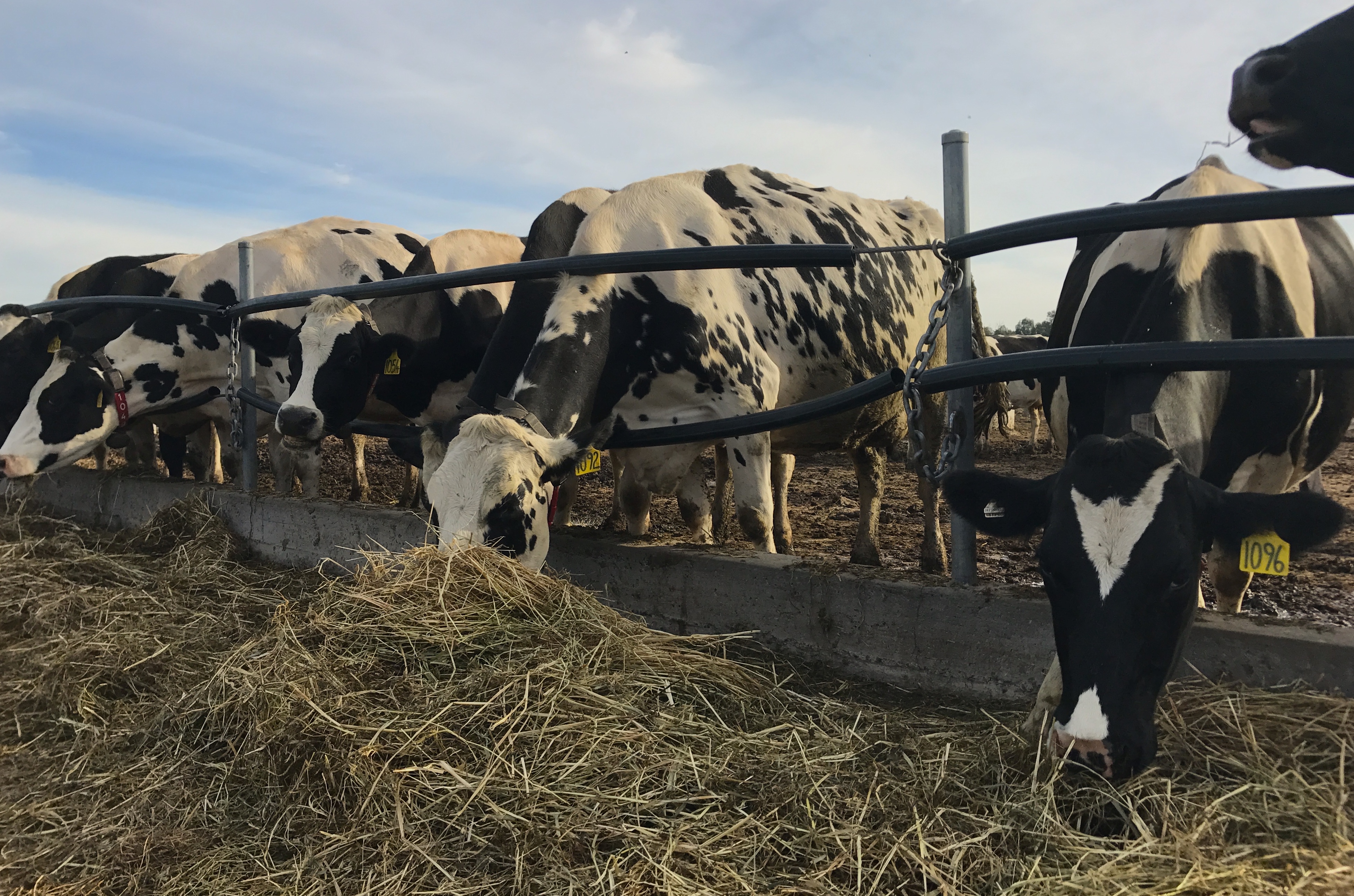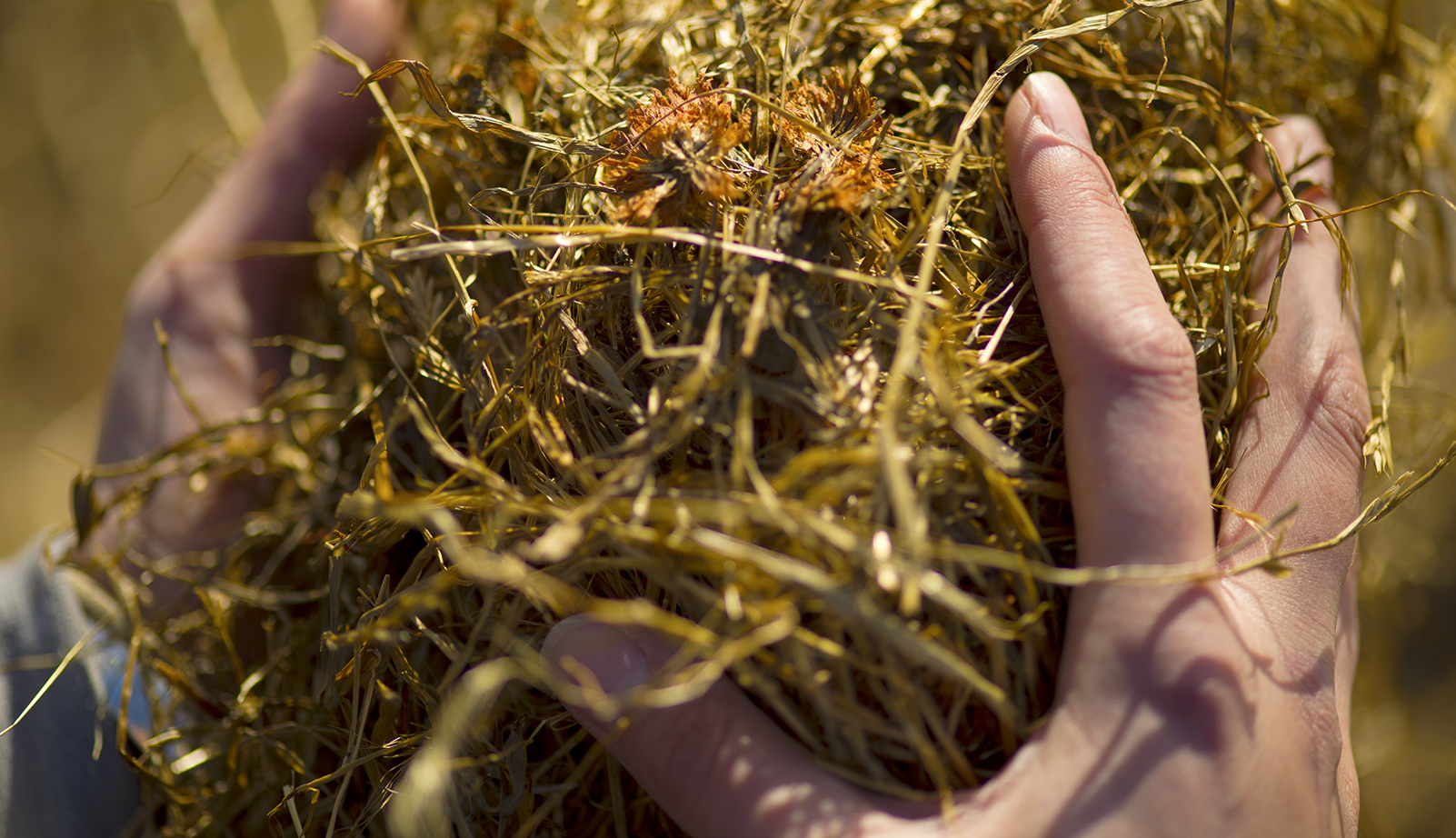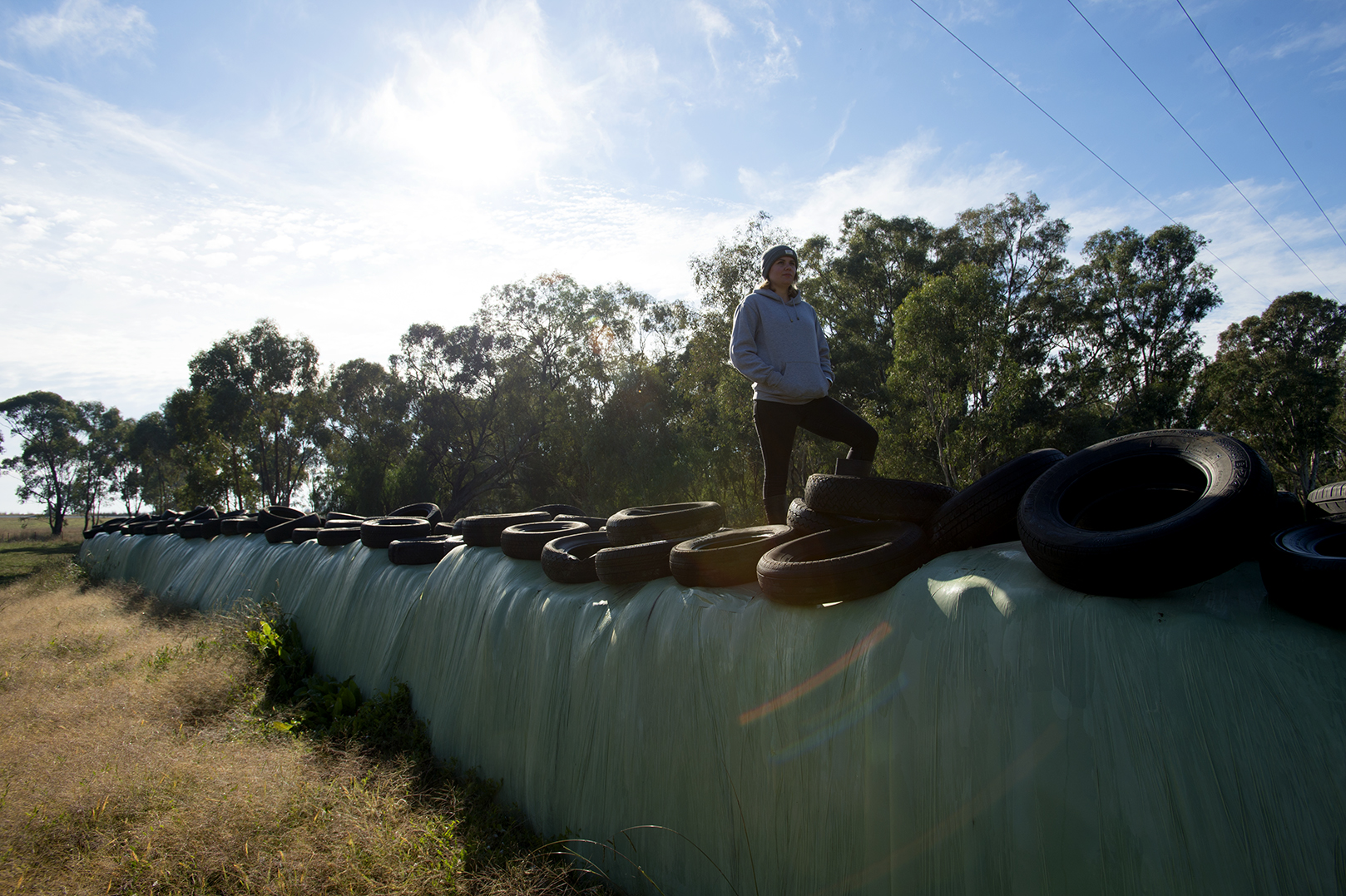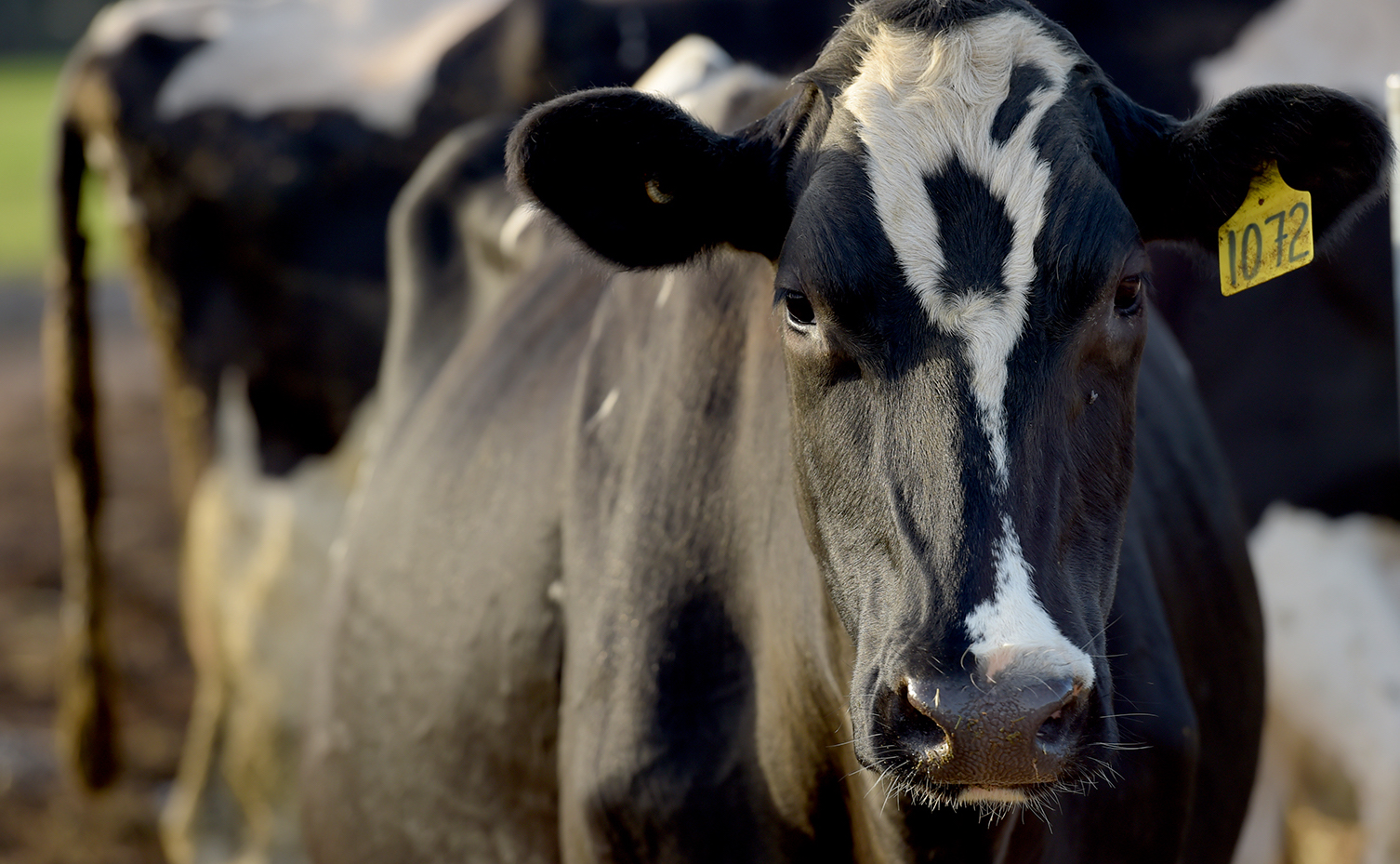
Sciences & Technology
Putting the chicken before the eggs

Smelly, pickled grass wrapped in plastic is actually a super food for cows. Silage is full of goodness, but it also gives farmers an extra tool for managing resources
Published 15 June 2017
If you’ve ever smelled silage, it’s not an odour you forget in a hurry. For some it’s the fragrance of a rural idyll – warm livestock, sunny pastures and fresh hay. For others, it smells like what it is, slowly fermenting cut grass becoming pungent, nutrient-rich fodder for animals.
“I love the smell. I can’t eat it, but I love the smell,” says Mr Nicholas Boyd, who works at the University of Melbourne’s dairy farm in Dookie, near Shepparton in rural Victoria.

Smell aside, silage is essentially grass that has been ‘pickled’ over an extended period of time. It’s designed to preserve food for livestock when their pasture outside isn’t any good, like in the dry season or because of bad weather.
“The main benefit of silage is being able to collect a high-quality fodder and store it. Being able to keep that quality is a unique thing in itself,” says Mr Boyd.
But there’s hard science behind the process, according to Dr Paul Cheng, a lecturer in livestock nutrition and grazing management with the University of Melbourne’s Faculty of Veterinary and Agricultural Science.

Sciences & Technology
Putting the chicken before the eggs
“It’s a bit like the idea of using vinegar to preserve foodstuffs,” says Dr Cheng.
“Silage basically allows compacted forage to ferment and promote the growth of favourable anaerobic bacteria, that is, living in the absence of air. When this bacteria grows, it produces acid that lowers the pH level. It limits any other bacteria multiplying and spoiling the forage, but also helps to preserve the material for years.”
The process for making silage is fairly straightforward. A pasture is cultivated and cut at the point when it contains its highest levels of nutrients. But it’s not just any grass.
“There’s lots of different types of silage,” says Mr Boyd. “There’s good and bad. You’ve got to make sure you’re growing the right species of grass to start with. You can’t just go and get the grass from any old paddock, you’ve got to grow certain types of quality feed. It might be a legume or a wheat crop.
“We try and grow clover and ryegrass here for the livestock, which makes high-quality silage.”

The cut grass is then sealed up in plastic. Getting the moisture content right and keeping the air out is key to successful silage.
“We mix about 50 to 60 per cent moisture to about 40 to 50 per cent dry matter depending on the conditions and the type of feed. It’s then sealed up air-tight. You don’t want to let any air in or out of it, as it’ll cause the silage to go mouldy. Then it sits there, fermenting, and holding its value as good fodder for the cows,” says Mr Boyd.
It can sit there for as little as a month, or as long as several years. And once opened it provides accessible, nutrient-rich feed.
“Silage is like rocket-fuel for cows. It’s like eating your vegetables versus chips. It’s the healthy option,” says Mr Boyd.

Environment
Dairy’s (climate) changing future
But the benefit isn’t purely for the herd. It provides the farmer with an extra flexibility for managing the resources on the land.
“It is a power feed management tool,” says Dr Cheng,
“It means a farmer can store extra feed when there is a surplus, that can then be fed out later when feed is short. It can allow the mixing of different types of feed to provide a balanced diet. It can even help animals to better digest forage that is difficult to digest in fresh form, as silage bacteria helps to break down fibre.”
Mr Boyd agrees.
“It’s more work and more expensive than making hay, but the cost benefits are there for having quality feed. And that’s what it’s all about.”
At the University’s dairy farm, the 130-strong herd had already chomped its way through more than half of this year’s stored silage in May.
“This year we’ve made around 300 bales of silage, and we’ve gone through about 200 already. And that’ll probably get us through to July,” says Mr Boyd.
But silage plays an important role for dairy farmers in particular. Good quality forage is essential to ensure dairy cows not only maintain a healthy body, but also produce high-quality milk.

“We’ve got to make sure she’s really healthy. The better we look after the cow, the more milk she’ll produce,” says Mr Boyd.
“We use silage on the farm to top up the daily requirements of the cows. If we didn’t have to, we wouldn’t. It costs money to put a tractor in the paddock, it costs nothing to put a cow in the paddock to graze on fresh grass.”
Then, of course, there’s the smell. But Dr Cheng says that whiff can actually help a farmer.
“It’s the by-products of fermentation that smell, mostly the volatile compounds such as acetic acid. Think about vinegar, it doesn’t smell good to most of people. But a really good farmer can actually check the quality of the silage quality by sniffing it.”
Banner: Imogen Crump/University of Melbourne